Automotive Interiors – Refer October 2019 Automotive Interiors Magazine
This is brief summary from September Issue of Automotive Interiors that highlights the innovations for automotive interiors that can greatly help enhance features in current and 2022+ MY vehicles.
XtraForm Antiglare Films for display solutions for excellent optical clarity, different gloss levels, low haze and low gloss hard-coated films and hard-wearing surfaces for touch interface.
Bentley EXP 100 GT Concept designed to represent the brand’s vision for motoring in 2035. AIW identified some interior highlights.
- Seats: Cabin features which may have two seats, no [visible] steering wheel and no pedals – a fully autonomous interior, but capable of being driven. Designed to only have forward-facing seats to allow for a lower and shapelier roofline than would’ve been possible if they rotated. However, rear seat squabs deploy from a panel in the rear bulkhead if required. The seats also use biometric technologies to sense a passenger’s comfort level in autonomous mode.
- Lighting: Lighting starts on the grille, goes up the hood from the ‘Flying B’ mascot, extends into the interior, flows through the doors, and then back into the rear lights based on 10,000 addressable LEDs throughout the car.
- Smart Cockpit: One nestling diagonally below the windscreen cowl and the other housed horizontally within the rear center armrest. Idea is to understand users’ needs and then confirm them through lighting effects via the ‘crystal portals’ that disperse the light at the base.
- Center Console: View from the car via outward-facing cameras, but also the soundtrack and smell of the location too. Team still wanted something physical for this digital memory playback moment though, in this case, another piece of crystal.
Note: For more information review October 2019 Issue Automotive Interiors article by Helen Norman.
Reinventing the Steering Wheel: Hyundai Motor Europe in its virtual cockpit concept is discovering that end users don’t always want fewer buttons. Most drivers like touchscreens, but don’t want to get mired reading instruction manuals before using them.
Customers liked the clean surface but having no idea which buttons did what was giving them a hard time. Two customizable touchscreens on the steering wheel, and augmented audio and visual responses with haptic feedback. Functions were displayed beneath the surface of the screens, improving end-user confidence, but it also introduced an ergonomic issue. The controls were set too far from the rim of the wheel for them to reach easily.
Most functions are managed via the central display, which features softer haptic feedback than the steering wheel, recognizing that it is more likely to be used by the passenger or when the car is stopped.
Note: For more information review October 2019 Issue Automotive Interiors article by Alex Grant.
Headset to Go / In Vehicle VR Systems: This is outside Design HMI core, but it touches on how is virtual reality being used in the car interior to improve passenger experience and enhance driving performance.
Note: For more information review October 2019 Issue Automotive Interiors article by Jack Roper.
Vauxhall Family Friendly Interiors: It seems simple, but even something as essential as a belt line can have a real impact on the interior. Vehicles specifically designed with families in mind will feature a lower belt line around the rear doors so “children get a good view out of the vehicle, rather than staring at a blank piece of plastic,” says Shaw.
Technology is also making cars safer in so many ways, but Shaw believes the decluttering of surfaces drastically reduces distraction for the driver and, in turn, makes life on the road with a family that much safer. Last year’s GT X Experimental electric concept car showed off an interior where all buttons and dials were committed to screens. Dubbed the Pure Panel, this expansive infotainment setup enabled all major functions to be adjusted by voice control and for eye-tracking software to be able to adjust the seats.
Note: For more information review October 2019 Issue Automotive Interiors article by Leon Poultney
Interior Comfort and Connectivity by Renault: The Iconic version of the Zoe, for example, has been fitted with 100% recycled seat upholstery made from safety belt scrap and plastic waste (PET), to appeal to the environmentally minded driver. The material is created using carded yarn manufacturing, rather than melting or chemical transformation, resulting in CO2 savings of up to 60% over traditional materials.
They are also looking at animal-free or vegan interiors for our electric vehicles,” Genin says. “We already use recycled fabrics for the Zoe’s dashboard and seats, but this is something we can take further. We’re not a premium brand; we make popular cars, so this is certainly a new direction for us to go in.”
The new Captur features a redesigned floating center console with a special pad for wirelessly charging mobile devices.
Note: For more information review October 2019 Issue Automotive Interiors article by Dan Symonds.
Vegan Interiors: Vegan-friendly car interiors are rapidly becoming a serious ethical and luxury proposition. Active vegans are on the increase globally and no longer driven just by concerns about animal welfare and/or their personal health. Compassionate Business Award presented to the all-electric Volvo offshoot and startup brand Polestar for standard vegan-friendly interiors on its forthcoming Polestar 2 model. The brand offers vegan-friendly alternatives to areas of a premium car’s interior that would be traditionally wrapped in real leather – including the seats, steering wheel, gearshift surround, and certain interior coatings on doors, and more.
It has already stated that from 2025 at least 25% of the plastics used in every newly launched Volvo car will be made from recycled material. The car’s interior used renewable fibers and plastics from discarded
fishing nets and maritime ropes for its tunnel console, the floor carpet contained fibers made from PET plastic bottles and a recycled cotton mix from clothing manufacturers’ offcuts, while the seats also used PET fibers from plastic bottles. even recycled its own products, utilizing used Volvo car seats to create sound absorption material for under the hood.
Boydell says Bentley’s vegan leather will arrive sooner in production form than many of the other ideas on the EXP 100, adding, “I think we’re the first automotive partnership with Vegea and it could be next year that we have it available for our customers.”
Rubber and plastic used to make tires can be vulcanized and toughened using tallow (mutton fat) and the steel used for a car’s frame can be lubricated with animal fat. Even internal cabin screens in entertainment systems contain liquid crystals that could be based on cholesterol taken from animals.
VW recently showed its latest EV concept the ID Roomzz – with ‘Apple leather’ made from the skins, cores and pulp discarded by the apple juice industry featured on its seats.
Note: For more information review October 2019 Issue Automotive Interiors article by Guy Bird.
Augmented Reality in HUD: Unlike previous renditions, these HUDs don’t simply float the speedometer navigation instructions in front of the driver, they monitor the vehicle’s surroundings and translate that information into transparent, multi- depth visual cues, helping to lighten the driver’s cognitive load without wearing a headset or special glasses.
Combined with the right hardware, the HUDs can be used to illuminate the desired lane when approaching a junction, indicate the proximity of the car in front using traffic light color coding, highlight points of interest such as parks or venues, and even draw attention to potential hazards such as encroaching pedestrians.
For £1,000 (US$1,200), the Evoque could be equipped with a holographic projector that displayed road speed, gear position, traffic sign recognition, and turn-by-turn navigation, all floating in the windshield in front of the driver. This system represented an important step toward a true holographic AR HUD as
it relied on external sensors and signals to operate the sign recognition and satnav functions, rather than the speedometer and gears, which use internal sensors.
This holographic unit was the creation of Two Trees Photonics, later to become Envisics, a tech startup originating from Cambridge University in the UK. The journey began with research by Prof. Bill Crossland in 2001, which was further developed by Dr Jamieson Christmas while working for Alps Electrics. This research offered a new approach to holographic displays, leveraging LCoS technology, rather than mirrors or an optical waveguide. The result was an extremely bright display capable of generating several holographic images simultaneously.
Note: For more information review October 2019 Issue Automotive Interiors article by Dan Symonds.
Mid-Air Haptics: The brainchild of Bristol, UK-based tech startup Ultrahaptics, mid-air haptic technology has emerged as another way of keeping driver concentration firmly on the road. By providing tactile feedback for virtual buttons or controls, drivers can intuitively control infotainment and audio systems without looking in the cabin.
When deployed in vehicles, the Ultrahaptics setup utilizes hand tracking cameras and several ultrasonic arrays, either combined as a pad or scattered around the cabin.
The Stratos can kick out haptics up to 80cm (31in), but in the cockpit you only need 30cm (12in).”
The company also recently acquired USA-based motion camera specialist Leap Motion, meaning it now has its own specialist division dedicated to the software, algorithms and cameras needed to create the product.
In a study with Nottingham University, Ultrahaptics proved that the combination of haptic feedback and gesture movement reduced the number of distracted driver glances by 25%.
Alexander believes this can be improved further by combining the mid-air haptic controls with holographic technology to create a multimodal vehicle human machine interface (HMI).
In Car Acoustics: Not part of Design HMI core but for those interested would be great to review.
Interior Lighting: Illuminating the interior when a door is opened is pretty much all that has been required of interior lights for much of the automobile’s existence. But the introduction of LEDs has created new opportunities for designers and engineers as stated by Richard N Williams,
Are any technologies going to take over from LEDs, and are there limitations to the technology? “Organic LEDs are something that we have been interested in for 10 years,” says Gonçalves. “The technology is quite different. LEDs are a semiconductor component, so they are quite solid and very resistant to temperature and humidity but can only emit a single point of light.
“OLEDs are created using a deposit of very thin layers of organic solution. They require a specific environment, but they are a surface emitter, like a sheet of paper, so the light is distributed uniformly in all directions.”
OLEDs also have lighter mass and do not require the same levels of cooling as LEDs, and designers can be very creative with light components that are uniform and homogeneous, enabling subtle design elements. OLEDs can also be fabricated on plastic substrates and bent, but there is a problem. “LEDs are very stable, production volumes are high, and the producers are well known,” says Gonçalves. “OLEDs require time to assemble the layers together and need large investments. We have seen a reduction in the number of suppliers in the market.” In fact, Gonçalves says that the technology has been all but abandoned by the industry.
More Innovations for Interiors:
Again, for more information review October 2019 Automotive Interiors Magazine.
March 30th 2018 – Autonomous and Luxury Car Interior Seat Controls and Rear Seating
Automotive OE’s are exhibiting innovative interiors for autonomous vehicles at various Auto Shows and through industrial designs posted on the WEB. All are designed to enhance passenger in car experience.
Without doubt these designs are truly innovative. But from earlier Auto Show Displays of innovative styling and features in non-production auto’s very few, if any, will make it to production. There are many logical reasons why styling and feature innovations displayed do not make there way into production cars and trucks. However, innovation brings value to both manufacturer and customer so stronger effort must be made to link Auto Expo styling concepts into production vehicles within a 2-year time line – otherwise why even showcase!
Design HMI works to link innovation to application for fast to market integration. The ones shown here are targeted to enhance feature and comfort in rear seats – a attribute that is most often neglected by North American Automakers. Most rear seat comfort / convenience in North American cars are targeted for children or kids in early teen years. That is why sitting in rear seats for journeys greater that 60 minutes is not comfortable with two adults in the front seats. Issue of comfort / convenience in all seats is critical for autonomous cars. It is hoped that lessons learned in designing for autonomous cars will be carried over to driver driven cars and trucks.
The other design aspect is the armrest which controls front and rear seat functions. It is important that passenger has full control of all seat functions.
Control designs must be styled to meet seat design styling, easy to package and styled to excite.
September 2017 – Further on Luxury Interior in Rear Seating
Have always been impressed by the quality and vision in automotive interiors shown at Auto Shows and other exhibitions. What is difficult to understand that gap between the innovative displays and those that make it to production.
The biggest gap is in rear sat comfort – with few exceptions from EU luxury car makers. In most cases passengers feel confined’ when they have to ride in the rear seats. With Autonomous Vehicles passenger (not just drivers) comfort.
Hopefully in the next few years rear seat comfort and infotainment will get the priority it deserves.
Design HMI wants to use its core competency and consult with suppliers to enhance vehicle interiors through innovation. Target would be to integrate technology solutions that have been validated in other market applications.
Write to designhmi@gmail.com for more information on core technology solutions.
Automotive Interiors Expo 2017, 20-22 June 2017, Messe Stuttgart
BMW HoloActive Touch looks floating graphic over the console. Touch either of the floating buttons and you control feature functions but also get distinctive touch sensation. It uses three sub-assemblies – projector, a camera and a speaker. The projector sits in a panel on the console and makes the images appear to float in the air.
A camera sensor captures the finger motion (like projected capacitive) and activates the feature / function. The unique feature is haptic feedback.
BMW HoloActive touch sensitive display for showing the driver information about music, navigation and more, which appears to float in air, and which also provides actual felt, tactile feedback in response to interactions. HoloActive Touch incorporates heads-up display features, too, meaning it could span the driver’s field of view and provide a more immersive way to access info about your car and your ride.
VW I.D. BUZZ for fully autonomous multi-purpose vehicle. Slight push on the steering wheel makes it retract and merge into the instrument panel, switching the I.D. BUZZ from manual control to the fully autonomous “I.D. Pilot” mode. In this mode, the wheel is decoupled from the steering gear via a newly developed steering column system. The ambient lighting then switches from white light (“Drive”) to mood lighting that is warm and relaxed. At the same time, the distribution of ambient lighting is extended to the rear seating area. Simultaneously, the status of the I.D. BUZZ can be seen always on the tablet and the augmented reality head-up display. (refer https://www.netcarshow.com/volkswagen/2017-id_buzz_concept/). The other concept is their HUD.
Acura Precision Cockpit has wood, leather and Alcantara suede with LED ambient lighting brings it added quality.
It has a 12.3-inch screen and touchpad and all gauges are gone,  and in their place, is a 12.3-inch screen. A second screen sits atop the dashboard, providing your usual collection of infotainment features. Each driving mode gets its own color theme.
and in their place, is a 12.3-inch screen. A second screen sits atop the dashboard, providing your usual collection of infotainment features. Each driving mode gets its own color theme.
The touchpad controls the system rests below the mode switch. It uses something Acura calls “absolute positioning,” mimicking a touchscreen without having to pull the screen itself within the driver’s limited reach with every spot on the touchpad correlating to a spot on the dashboard screen.
Hyundai health-conscious vehicles concept is designed to monitor the health of occupants and can manage the stress and other negative effects often produced by driving. The cockpit includes sensors to detect if the driver is losing concentration. If the driver does lose concentration, an ‘Alert Burst’ can be triggered, but if the car detects high stress levels, a ‘Calm Burst’ will be activated to boost relaxation. For example, if the driver is losing focus, the driver’s seat can automatically adjust to a more upright position.
Similarly, different levels of warm and cooling lighting through the cabin can be varied to impact alertness and mood. There’s also an advanced scent system where different aromas can be dispersed through the cabin. For example, lavender or eucalyptus scents can be used to calm a driver while cedar or peppermint can energize occupants (refer http://www.carscoops.com/2017/01/ces-2017-hyundais-healthcare-cockpit.html).
“Lightex® for surface lighting”, EFI Lighting for automotive interior lighting based upon Lightex® technology.
Volkswagen future cabin personalization wants vehicles to recognize the people that drive them and immediately adapt to each person’s preferences. It uses 3D screens with two displays one behind the other providing illusion of depth. Eye tracking Technology is also added.
The other vision targeting 2021 vehicles could be Panasonic Next-Generation Augmented Reality Head-Up Display.
Faurecia’s Active WellnessTM 2.0 seat with cockpit becoming predictive through occupant monitoring and data management for  comfort and safety through extensive data monitoring on the driver’s condition like heart & respiration rate, body movement or fidgeting, humidity temperature, eye gaze technology, and others. It hopes to predict how the driver will be most comfortable based on his physical condition, time of day, traveling conditions and whether in semi-autonomous or autonomous mode. Then the seat system applies countermeasures pertaining to detected motion sickness, stress, discomfort, drowsiness, and readiness to operate controls. Adient AI17 demonstrator.
comfort and safety through extensive data monitoring on the driver’s condition like heart & respiration rate, body movement or fidgeting, humidity temperature, eye gaze technology, and others. It hopes to predict how the driver will be most comfortable based on his physical condition, time of day, traveling conditions and whether in semi-autonomous or autonomous mode. Then the seat system applies countermeasures pertaining to detected motion sickness, stress, discomfort, drowsiness, and readiness to operate controls. Adient AI17 demonstrator.
Chrysler Portal’s seat concept is a thin seat, which folds flat, folds up and slides fore and aft on a track system. The seats mount to tracks embedded in the floor, enabling them to move the full length of the vehicle and, if needed, to be removed from the rear.
The seat sits on tracks on a narrow pedestal design that has multiple embedded functions. For example, the pedestal includes a release handle for adjustment when the seat is in a flip-up position.
Experience in Motion concept demonstrator 2017 (XiM17) from Yanfeng Automotive Interiors is an electric-drivetrain concept vehicle’s four seats and floor console are the main elements within a large, flat-floor interior. By selecting one of four modes (driving, family, meeting, lounge), the seating and floor console are automatically powered into specific positions.
Land Rover New Discovery’s Intelligent Seat Fold technology allows owners to configure their vehicle seating through the InControl Remote app on their smartphone. Vehicle’s seating layout can be changed at the touch of a button on your smartphone.
The Intelligent Seat Fold technology can be activated in four different ways, including the remote function. Switches within the luggage area and on the C-pillar allow the seats to be moved or folded while standing beside the vehicle. Row two and three seats can also be raised and lowered using the main touchscreen display on the dashboard.
Land Rover’s InControl Remote app allows customers using both iOS and Android smartphones to connect with New Discovery from anywhere in the world, making it possible to perform a variety of functions. From confirming all the windows are closed or checking the fuel level to setting the air conditioning or monitoring its location, the advanced technology brings new levels of customer convenience and connectivity to the premium SUV market.
Honda Magic Slide seats allows drivers to maximize the cabin’s efficiency. Magic Slide is configurable into four different modes, each with its own practical advantages
3D laser texturing has various uses in the automotive industry  including the texturing of Backlit Buttons, Textured Fascia’s molds or directly onto components for improved aesthetics and light refraction. This technology allows engraving of the finest textures on a wide array of materials (steel, aluminum, carbide, brass, graphite, copper, ceramics) and competes with the finest hand engraving.
including the texturing of Backlit Buttons, Textured Fascia’s molds or directly onto components for improved aesthetics and light refraction. This technology allows engraving of the finest textures on a wide array of materials (steel, aluminum, carbide, brass, graphite, copper, ceramics) and competes with the finest hand engraving.
Refer FIMARK LTD
The new CoolTouch™ is 3D ornamental formable aluminum sheeting applied to injection molded plastic designed to deliver the luxury look and appearance of real metal and thinner materials. The ultra-thin aluminum sheet is pre-formed and bonded to plastic via injection molding technology i.e. in-mold decoration or insert molding, for decorative application as used in automotive interiors.
At just 0.2mm thin, the sheeting is four times thinner than  standard aluminum coatings making it able to precisely form complex shapes, while retaining the feel and thermal properties of premium metal, for example, the finish is cool to the touch when you start your car in the morning.
standard aluminum coatings making it able to precisely form complex shapes, while retaining the feel and thermal properties of premium metal, for example, the finish is cool to the touch when you start your car in the morning.
CoolTouch™ is also up to 4 times lighter than current 600-800µm market alternatives, and as such, its high formability significantly reduces material use and waste, thus providing a cost-effective solution for a real metal use, while addressing critical need for agile solutions in the automotive industry.
Sekisui Alveo has introduced a new grade of ultra-soft foam: Alveolit TP SE. The manufacturer of high-quality crosslinked polyolefin foams for automotive interior applications is softest foam for interior components in line with the current trend towards very soft and luxurious interior trim surfaces and materials that enhance the brand value of the automobile.
EFI Lighting light guide solutions for car interior design uses Lightex® technology, an optical fiber weaving principle. The process provides homogeneous luminance over the whole length of the guide. The optical fibers are connected to light-emitting diodes (LEDs) that deliver all colors of the visible light spectrum.
Another solution was backlighting surfaces for car lighting EFI Lighting uses Lightex® technology, an optical fiber weaving principle. It is designed to provide homogeneous luminance over the entire backlighting surface.
Lightex® technology includes LED module including LED sources, opto-coupler, power controller and connector. Flexible design with large color diversity: white, monochromatic or RGB. High luminance stability over length (up to 3 m with imperceptible attenuation)
High luminance to meet both ambient and functional lighting for interiors is possible.
The optical fibers are connected to light-emitting diodes (LEDs) that deliver all colors of the visible light spectrum. Lightex® products and processes are protected by many international patents.
Last few months learnt from Interior Technology Expositions and was very impressed at the high level of innovation in interiors developed by all automakers – especially in Europe targeting the global market in China, India and North America and of course Europe.
Please click Upcoming Interior Innovations in Automotive to review few. Will try to add to this more information in coming months.
Tire pressure monitoring systems in automotive are quite basic strictly fulfilling FMVSS requirements. We have not used the feature to enhance drivers in car experience. ZUS concept design now in crowdfunding brings in some additional features.
Another application is the use of Power Responder Hybrid Supercapacitors in Portable Devices as shown below to provide power to momentary applications which need higher power for a short time. Two such examples are ambient heating for seats and steering wheels and power for IoT devices to transmit bits of information.
Smart surfaces and screens especially for Autonomous vehicles could be another development where the technology already exists – the issue is application.
Smart Flat circuits to reduce weight and wiring complexity is another area of fast to market development. Companies like DuPont already have a few years of development knowledge in flexible electronics. There is no reason why we cannot piggyback on DuPont and other innovators knowledge and take it to next level.
Panasonic smart self-drive car designs – just three of them are shown here. Their floating controller is ideal for rear seat controls application.
Better designed micro brushless motors for automotive interiors with torque converters is a major want where again technology also exists within innovators like FZB Technology.
A unique phone holding strap design from www.jumbo-textile.de is a simple example for holding phone in place. Coupled with  wireless charging and data transfer integrated into the rear where phone rests make it ideal for holding cell phone in place while driving. Apple Play or other mirrors image software’s ensure that usage of the cell phone is not lost.
wireless charging and data transfer integrated into the rear where phone rests make it ideal for holding cell phone in place while driving. Apple Play or other mirrors image software’s ensure that usage of the cell phone is not lost.
Green alternatives to Leather in cars is paramount working with reused wood, recycled carbon fiber, stone, silk, wools, cashmere and others as written by Nargess Banks.
LED Engin’s compact LuxiTune single-emitter white light engine designed to provide consistent, true color as it dims from bright midday light to the warmer, softer tones of the evening for accenting needs where ambience is desired.
- Color tuning a short distance below the Black Body Curve for exceptional white light
- Color consistency stays within 3 SDCM throughout the operating temperature range
- Tuning ranges:
- Warm Dim Mode: Warms from 3000K to 1600K as it dims halogen-style
- CCT Tune Mode: Tunes from 2100K to 4300K with independent brightness control
- Accurate color rendition with CRI 90 @3000K, 85 averages throughout the CCT range
- Color point/flux stable over temperature, operating range and lifetime
- 0-10V, DMX, DALI control interfaces
- 24°/34°/45° beam shape from compact 45mm TIR lens
- 63lm/W in use (hot) condition including secondary optics
NOTE: According to Luigi Leonardi, Continental Seating noise from electrical motors will become even more important for EV’s as engine noise becomes very silent and noise of actuators and motors is not desirable.
In autonomous driving cars, the seating is one part that is (as in all cars) is always in contact with the driver and passenger. It is ideally suited to collect biometric data on passenger’s health and wellness. It will be the key connection between passenger and car information systems.
High Gloss durable design surfaces from black chrome to rose gold SILCOS has a new range of PVD surfaces.
Another feature which was shown by BMW at the 2016 CES is the HoloActive Touch for the front driver input. May be too distracting for the front but not for rear passenger. It has a floating graphic which uses three main components: a projector, a camera and a speaker. The projector sits in a panel on the console and makes the images appear to float in the air.
The camera, like the one used to enable gesture control in the latest BMW 7-series and 5-series cars, captures the motions of pointing at the graphics. When it recognizes a gesture, it activates the appropriate response in the system, such as stopping or playing a movie.
To generate the haptic feedback, the feeling of having touched something, a subsonic speaker mounted in the console fires a pulse. Impressively, that pulse felt localized to my finger tip when I touched the floating graphic.
Reell PHT Position Hinge has a flag-style mounting design, with a  full 360° of available rotation. It features Reell’s ‘One-way’ torque technology which eliminates nearly all the torque required to move the hinge in one direction, without compromising the holding force in the other. This makes the PHT ideal for vertical headrest adjustment applications and potentially for retractable steering wheel switches. It holds solidly against gravity in the downward direction, while remaining easy to adjust in the upward direction. Available torques range from 2.0 to 6.0 N-m.
full 360° of available rotation. It features Reell’s ‘One-way’ torque technology which eliminates nearly all the torque required to move the hinge in one direction, without compromising the holding force in the other. This makes the PHT ideal for vertical headrest adjustment applications and potentially for retractable steering wheel switches. It holds solidly against gravity in the downward direction, while remaining easy to adjust in the upward direction. Available torques range from 2.0 to 6.0 N-m.
2018 Vehicle Interiors per Wards Auto
Below are pictures of some of the best Interiors per Wards Auto. The interior that is best can only be decided by the customer validated by vehicle sales. The Lincoln Navigator Interior is very impressive but so are most of the others.
Based on your historical vehicle choice and personal WANTS customer will choose the vehicle. A very important point to note that in most cases the great interiors are restricted to very high-end luxury vehicles.
In North America if you look at the three full size mid-level vehicles the interior is basically similar and not very different over a 2016 MY to 2018 MY.
With time to bring innovation into vehicle 4+ years from initial validated concept most in vehicle innovations are already basic market components – not innovations. Integration and interior design is truly what creates a great interior today – which is a great achievement also but not based on technology development.
Also, updated interior accessories for current customers is an area totally neglected by North American OE’s and Tier 1 suppliers. Once you buy a car the only way to get enhanced function / features is to wait for next model year and trade your car for next model. In China, Europe and even India the market, OE’s and Tier 1 suppliers do a much better job supporting current vehicle owners.
Value through technology innovation is the key. Example look at the Amazon Auto, while it won’t grant you access to HOV lanes, it allows you to take Alexa with you on the road. So the expensive voice controls offered by NA OE’s can be replaced with this $25 – $50 Amazon Auto.





















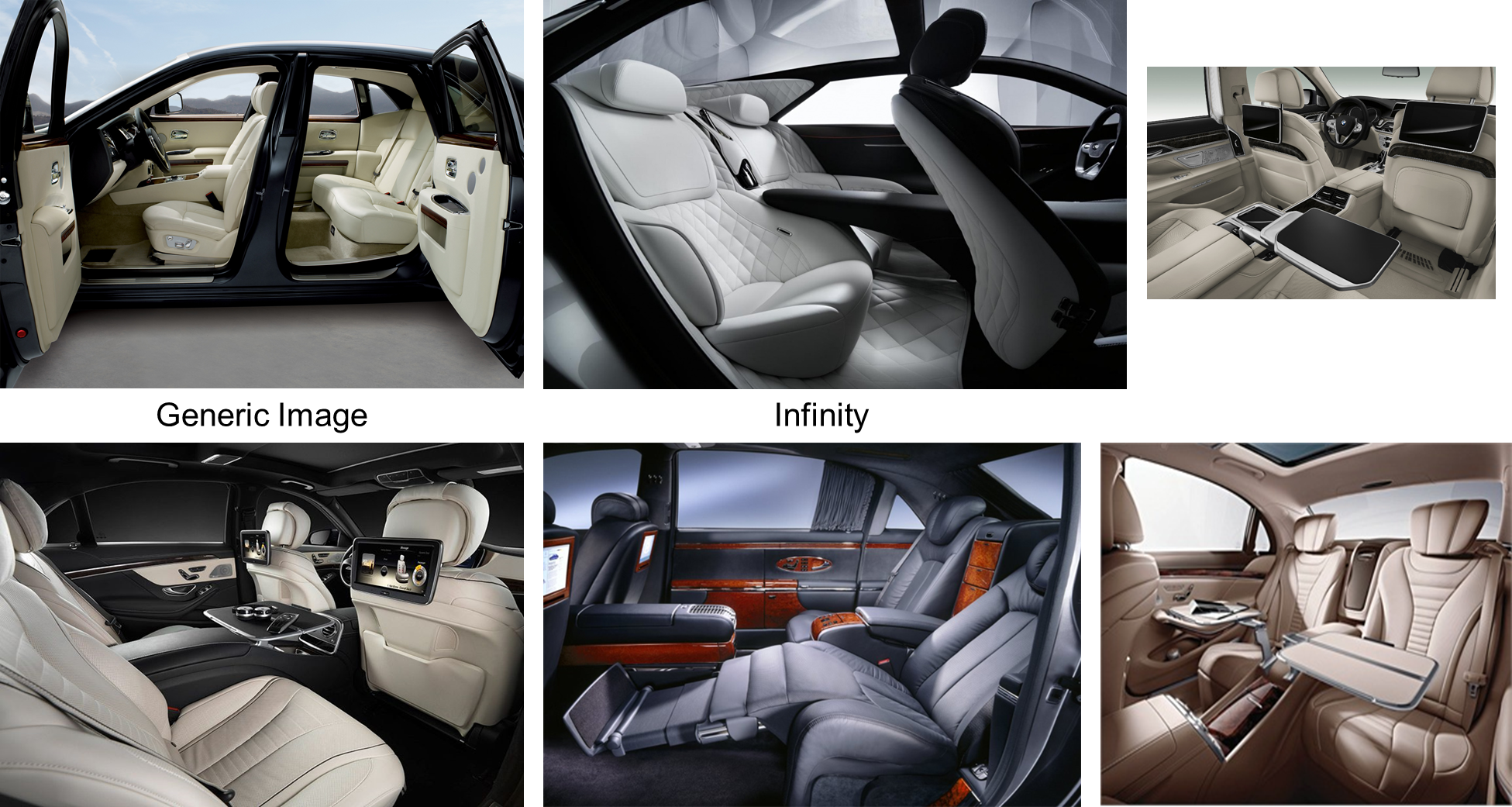




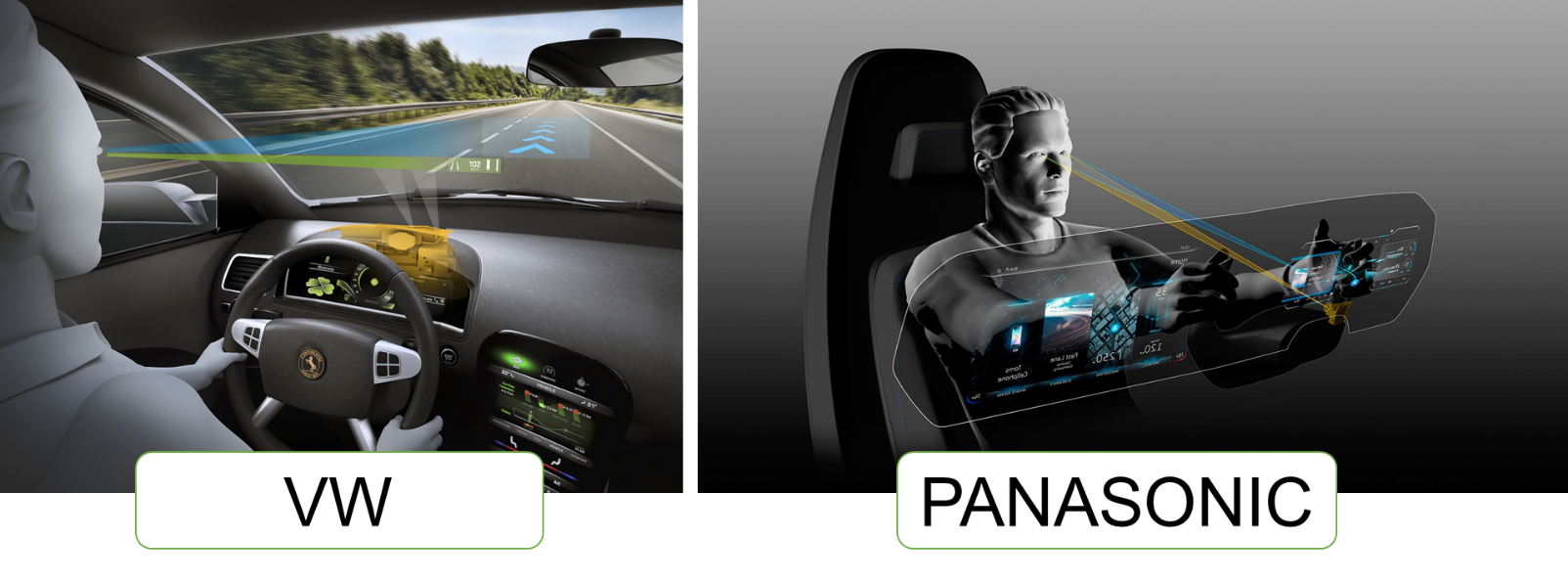



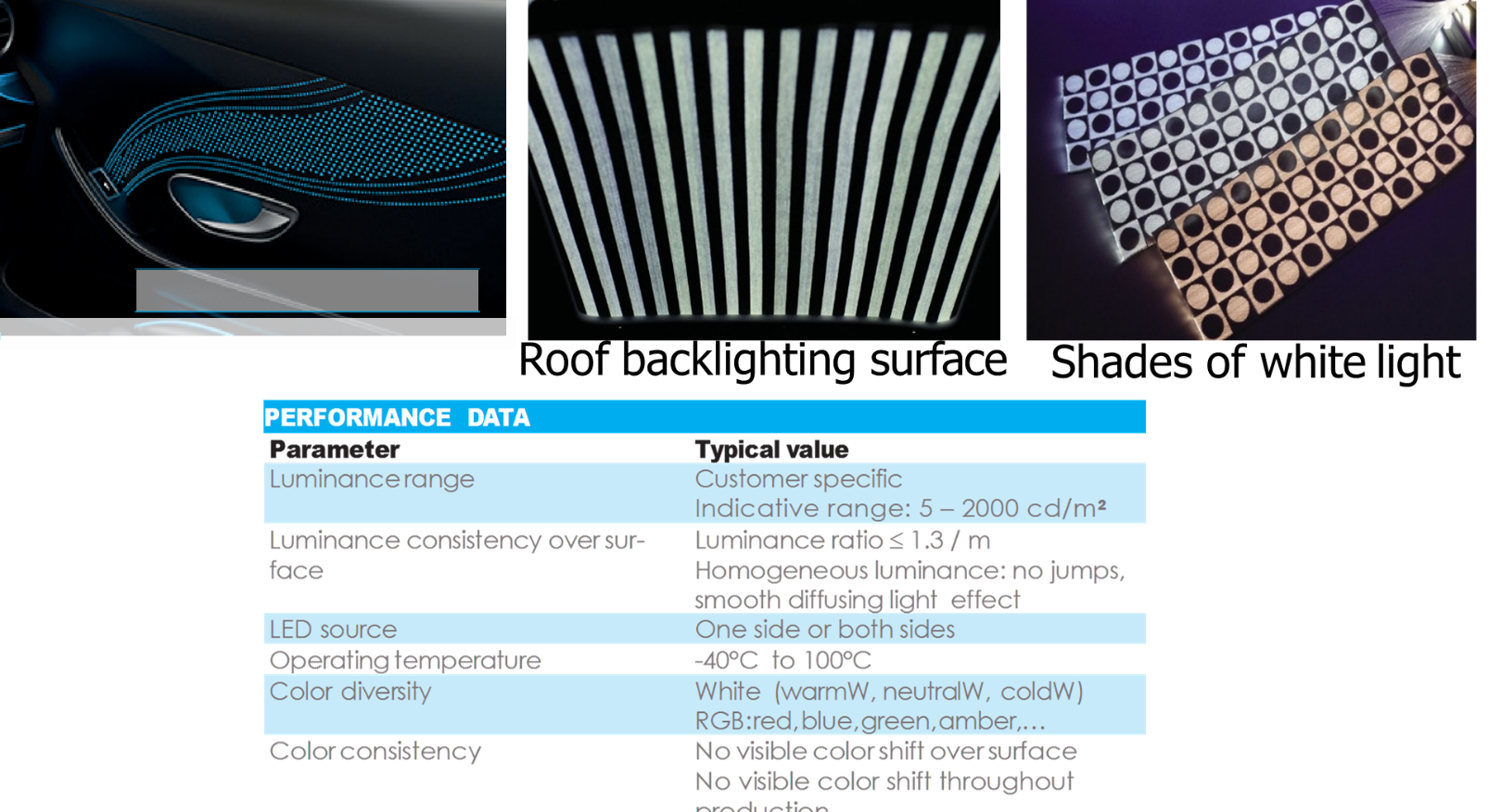









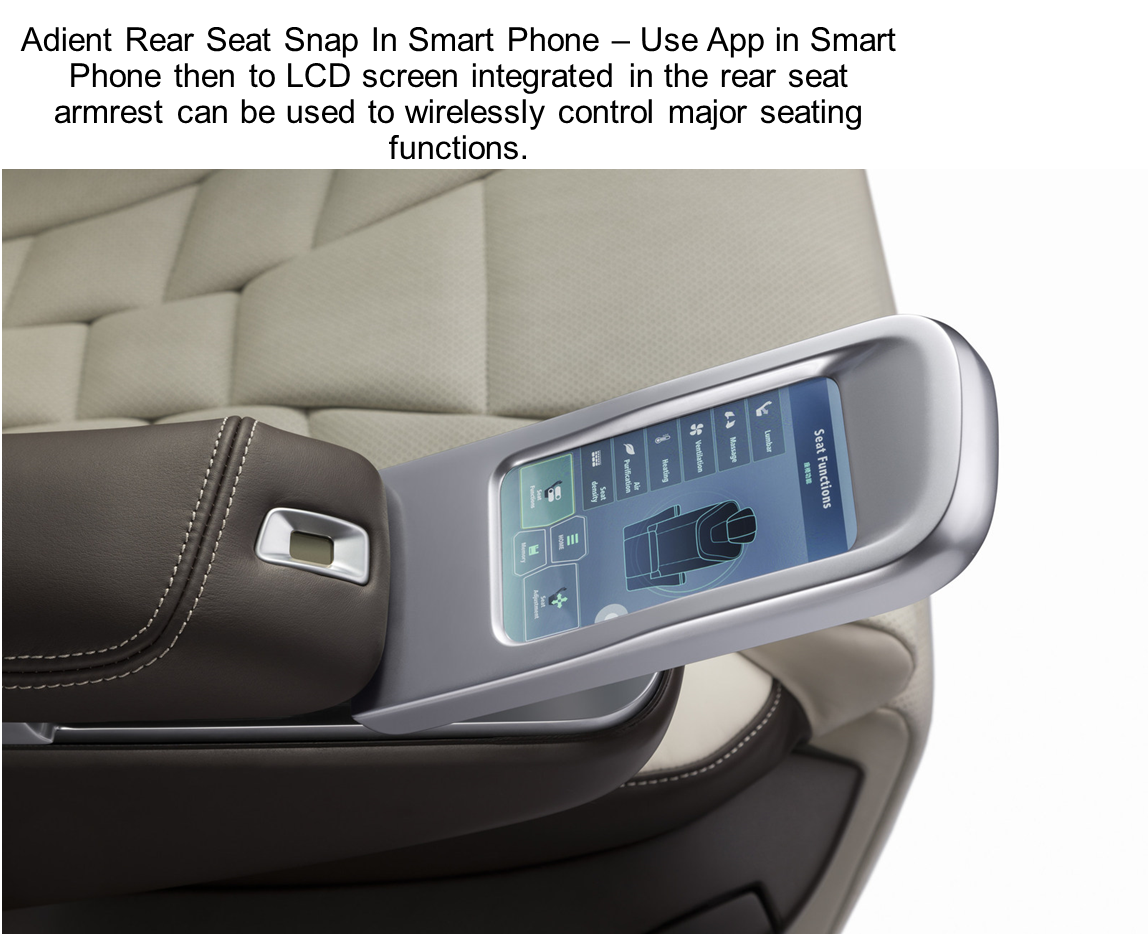
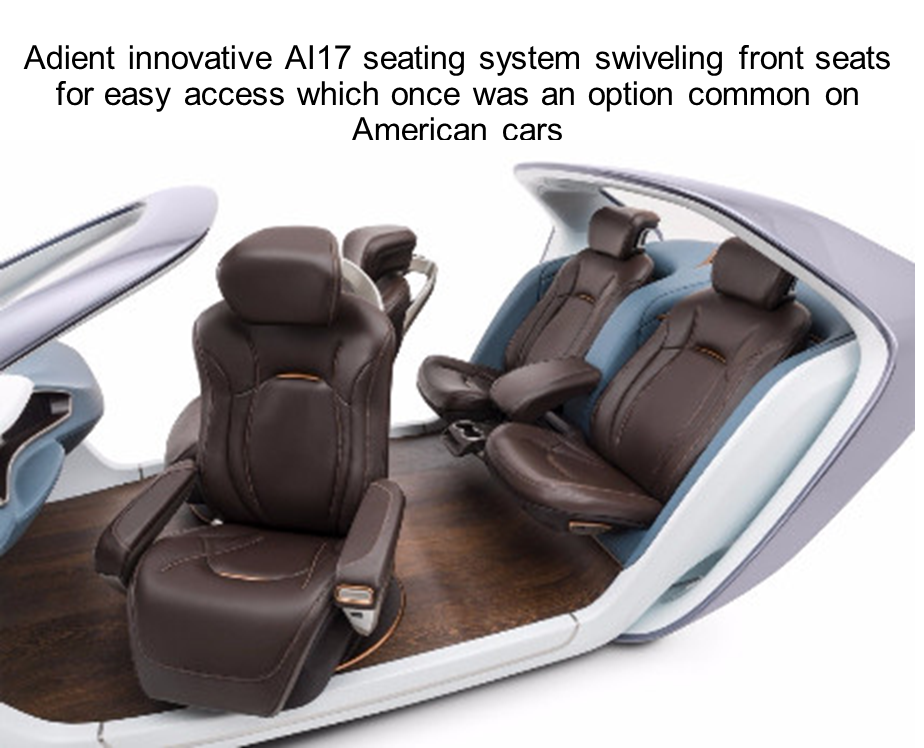



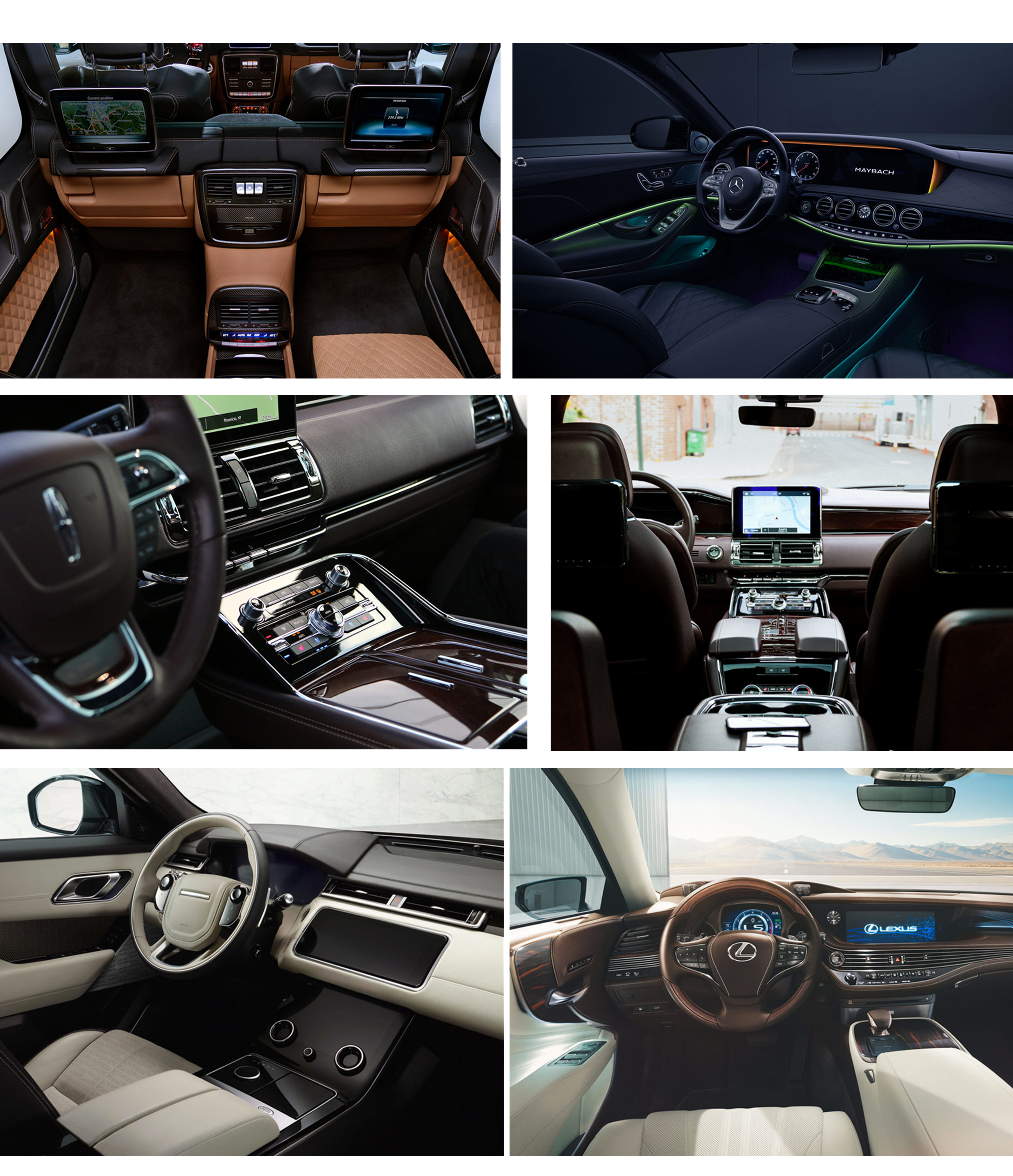

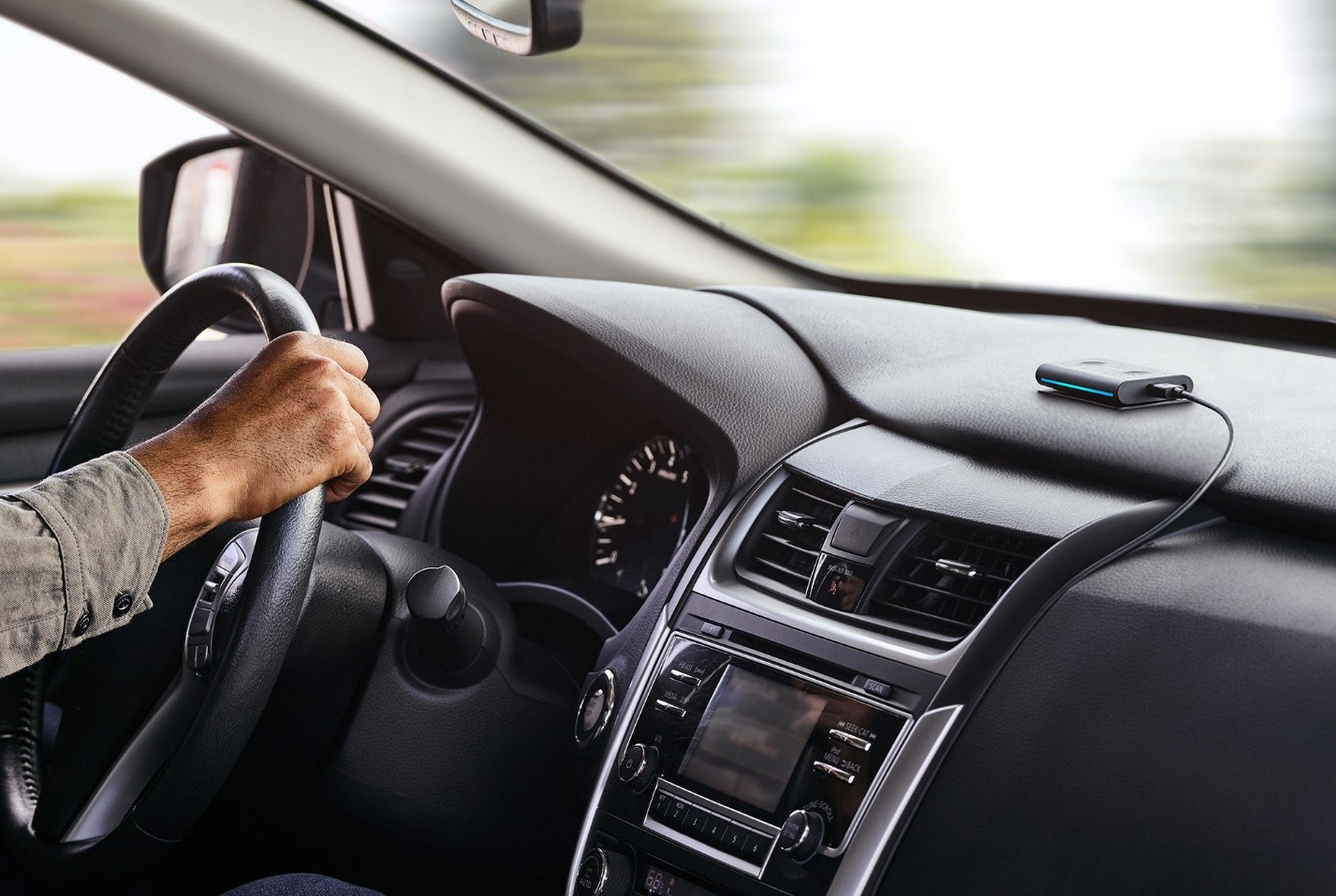

I see you don’t monetize your page, don’t waste your traffic, you can earn additional cash every month because you’ve got hi quality
content. If you want to know what is the best adsense alternative, search in google: adsense
alternative Mertiso’s tips